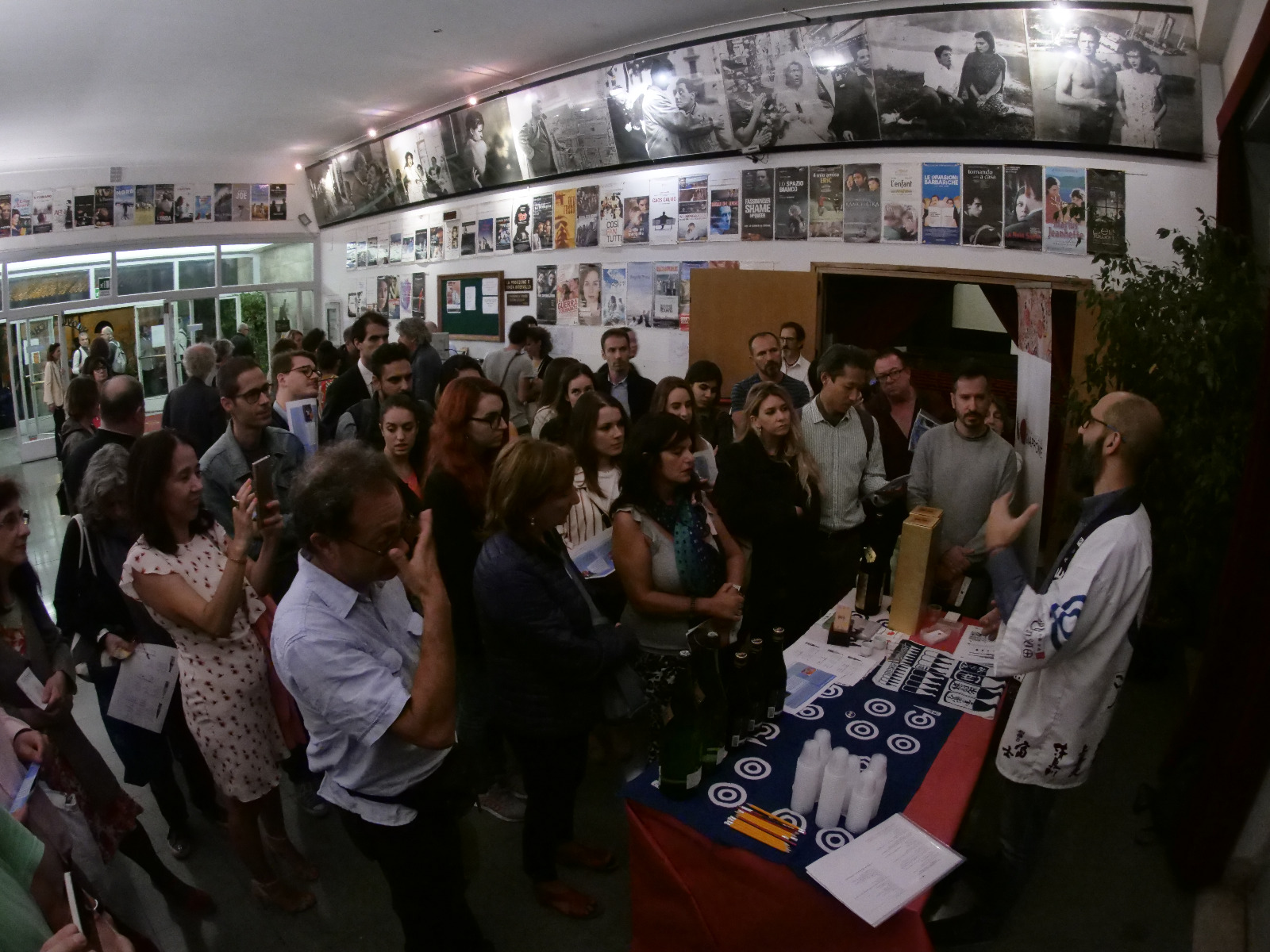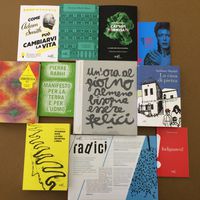Asiatica Film Festival in Rome: Interview with Italo Spinelli

To the international cultural arena, Rome is hardly known as the epicentre for contemporary Asian culture in Europe. Nonetheless, in Italy, there is a bunch of passionate individuals who are creating significant and regular events which keep the spotlight on Asia. Moved by sheer passion, they are spreading the art of a continent which is still regarded as exotic and mysterious by the general public.
When it comes to cinema, the figure bridging cultures is incarnated by director, screenwriter and actor Italo Spinelli. Born in 1951, he experienced a fertile ground for ideas and culture in Rome during his youth. His name is commonly associated with movies like “Da'wah” (2017), “Gangor” (2010) or “Roma Paris Barcelona” (1989). He is also the founder and director of the festival of Asian cinema called “Asiatica Film Festival”.
“Asiatica - Encounters with Asian Cinema” was created in 2000, to establish a channel of communication between Italy and Asia. While movies are central to this dialogue, Asiatica has also hosted exhibitions, live performances and special sections. The aim is to enrich the cinematographic experience with other cultural expressions and foster knowledge about social, economical and political issues around the Eastern continent.
Asiatica Film Festival Director - Italo Spinelli
Sitting at a café under the imposing arcades of Piazza Augusto Imperatore in Rome, sheltered from the autumn rain, I asked the director to recount how the Asiatica Festival came to fruition: “In ’89 I realized the award-winning movie ‘Roma Paris Barcelona’ with my friend Paolo Grassini, who later moved to India, “explains Spinelli. “One day I decided to visit him.” As soon as he arrived in India, he felt an immediate sense of belonging: “It was a sense of familiarity, of coming back. I couldn’t help falling in love with the country.”
Up to that point, Spinelli’s knowledge and tastes in cinema consisted of only Western films. From then on, he started becoming interested in Indian cinema, and the idea of bringing these movies to Europe started dawning in his mind: “Over the years I kept on travelling to Asia. That’s how I came in contact with the movies we started screening. The opportunity came in 2000, in the form of a grant by the Italian Ministry of Culture. We started the first edition with 12 films. most of these directors eventually became internationally recognised, and their movies circulated from Cannes to the Asian film festivals.”
“We screened the first movies of Rithy Panh from Cambodia. Asiatica was the first place where the second film of Iranian director Asghar Farhadi was presented. He was an emerging talent at the time. He came back to Asiatica also for his 4th film, “The Separation”, which won the Oscar. It was a great satisfaction to see these things happening and it was what motivated me in the first place.”
Has your interest towards contemporary Asian cinema, art and culture in Italy increased since you starting Asiatica?
Italo Spinelli (IS): Definitely. In the beginning people would simply come to see something “exotic”. However, they immediately realized those movies weren’t just documentaries depicting different countries. There was actually great artistic value in Asian cinema. In other words, when they came to see a movie about Thailand, they find a great movie coming from Thailand.
Also, it is important to mention that with Asiatica, Italy became the first European country to became part of NETPAC (Network for Promotion of Asia Pacific Cinema), an important community and circuit for the Asiatic film festivals. Asiatica is thus an opportunity for some of the less-known countries to present their cinematography to an international public. For example, we have started projecting movies from Uzbekistan, Kazakhstan and Central Asia. These countries have great directors, both influenced by the Moscow school and by their Muslim background. Even though there is great talent available in those countries, they have a hard time being recognized. I’d say Asiatica has contributed in opening a small window for them in Italy. We have 10,000 people that will see it in Rome.
You regularly invite directors to come and speak to the Italian public. What is the importance of these interactions?
IS: The encounters with the public have been central since the beginning of the festival and also represents the real qualitative element of the Festival. From the beginning, it isn’t’ just film directors, but also writers, musicians and artists from Asia, creating a real contamination between the arts. For this very reason, the festival is hosted year after year by the various museums in Rome, from the Palazzo delle Esposizioni, to the MAXXI, the Macro, la Pelanda. Asiatica’s public is not navel-gazing. They are not Euro-centric. They love Asia and they want to understand its complexity, and they are also open to the world as travellers. They are readers, music lovers, they love ballet, painting, art and so on.

Invited directors interacting with Italian public
Can you tell us more about the section of the festival devoted to literature?
IS: I feel writers and directors are of the same breed. I don’t know of many writers who don’t love cinema too. A case in point is Jhumpa Lahiri, who incarnates the Asiatica ideal and joined in two or three times. She is born in London from a Bengali family, she lived in the States and now is a Rome resident writing in Italian. She incarnates the idea of “innamoramento tra culture”, a love story across different cultures, which was our original idea. I feel we need more contaminations between the arts. Cinema to us is simply the starting point to encompass all the different levels of culture.
When we think about Asian cinema in Europe, it still sounds quite niche. How do we make it more popular?
IS: Over the years we have screened many movies which have been very popular in their country of origin and were successful here too. I’m talking about 3-hours-long Thai love stories with queens and kings, elephants, the Ramayana epics and so on. Bollywood is also very appreciated. We are interested not only to show the most engaged face of Asian cinema, but also its lighter and even comical side. The only genre which we are not interested in are propaganda movies.
Another point to make is that censorship is very much present in the countries these movies come from. Directors often find a very poetic or ironic way to go around it and still speak their minds. However, it’s difficult to translate the subtle cues to a foreign public who might not understand the context. In that, inviting writers and other figures helps clarify and explain the references.
Is it possible to find common features in Asian cinema?
IS: Personally, I find it really hard to consider and speak about Asia as one single reality. I can’t put together Iranian cinema with Tibetan cinema. I can say that there is definitely a new language coming from these countries, which has been acknowledged by the West. Take Wong Kar-wai’s “In the Mood For Love”. It’s a style which is personal, with really interesting photography by Christopher Doyle. We have frames where the subject is often covered or cut. Would you say that’s “Asian Cinema”? It is cinema, that’s all.
Can you tell us what to expect for the next edition of the Festival?
IS: The next edition of Asiatica will take place in October 2019 and it will be a 20 years celebration. The vision is to increasingly blend the different arts. I want to expand the definition of cinema as something not only happening in theatres, but letting it be part of people’s lives.
Links:
http://www.asiaticafilmfestival.com
Naima Morelli is a journalist and arts writer researching emerging art systems. She is specialized in the Asia-Pacific region, focusing on Singaporean, Indonesian and Australian art and she is currently researching Cambodian contemporary art. Currently based in Rome and constantly on the go, she has the mission of bridging Asia and Europe through art, culture and words. Her pieces regularly appear on CoBo Social, Art Republik, culture360, Art a Part of Culture and Middle East Monitor. In the past she has written for Art Monthly Australia, ArtsHub, NY Arts, Artribune, I-Magazine Bali, The Times of Malta among others, and she has contributed texts to a number of publications and exhibitions catalogs. She is also the author of the book “Arte Contemporanea in Indonesia”, a narrative essay published in Italy. The book shows how contemporary art produced in Indonesia can’t just be labelled as “Indonesian”, while tracking the context’s influences on the art itself.
Similar content
By Kerrine Goh
03 Jun 2005
By Kerrine Goh
02 Jun 2016
posted on
25 May 2011
15 Jan 2018
By Kerrine Goh
01 Sep 2004



